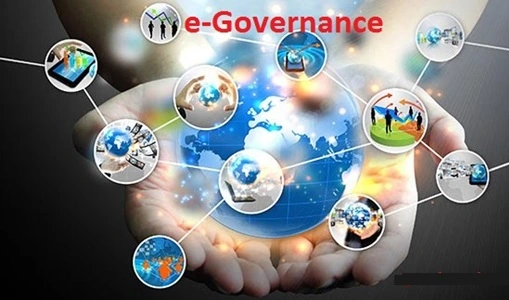Before anything else, you should know that E-Governance is really changing public service execution right now before our eyes. Short for electronic governance, this is a great thing working behind the scenes in the way government agencies are run, and sure, it is not just a techy trend that comes and goes. E-Governance is all about imagining a few clicks online replacing piles of documentation. It’s about using digital technologies including the Internet, cell phones, and computers to not only increase government function efficiency and effectiveness but also to greatly increase openness and responsibility overall, you know?
Why does this all even matter? Well, that’s simply because E-Governance makes things much simpler and more transparent than ever before, so why not? These services are meant to be just a tap away regardless of who you are and what your role is in a country. All in all, today, E-Governance is being done in many countries around the world, and since it is to save time, make things more transparent, and provide public services to all, in our opinion, it truly is a great thing. Let’s find out the pros and cons of E-Governance:

Advantages of E-Governance
1. Super Speedy Services
You see, e-governance, with its digital magic, cuts through the so-called traditional bureaucracy, you know, with its never-ending paper trails and need for people to be present in person all the time. This way, things run more smoothly, you don’t have to wait in line, and you save time. For sure, digitizing these tasks speeds up the flow of information, cuts down on administrative delays, and gives the government more money for bigger, better projects.
2. Services at Your Fingertips
Nowadays, it is as easy to use government services anywhere as it is to post a selfie online. E-governance is a huge step forward, especially in huge countries where many people have to travel a long way to get to a government building. Do you need to get a new ID or do your taxes? Why go and wait in line? You can do it from the comfort of your own couch with your favorite snack in your hands.
3. Seeing Through the Government
In e-government, openness is key, quite literally! Everyone can see what’s going on inside because records and changes are just a click away. This digital window helps build trust and lets people keep a close eye on where the money goes and what decisions are being made. It really cuts down on shady business.
4. Cutting Costs, But How?
You can say goodbye to piles of paper, big offices, and rows and rows of filing boxes. With e-governance, you don’t need as many real things, so you spend less on things like ink, paper, and office space. Now, more of the budget can be used to improve service or reach out to people who aren’t getting enough help.
5. Convenience As A Whole
Imagine having all of the government’s services in one digital place, where they would be easy to find and use. E-governance tools make sure that everything is coordinated and that everyone knows what’s going on by putting together data from different departments.
6. The People Have Power
E-governance gives us new ways to have a say in how policies are made, you know? You can give feedback or join talks online, which is a new way to be involved. By letting everyone say what they think and help shape their town and country, it really and truly gives people power.
7. Techie Government
With AI, blockchain, and data analytics as tools, e-governance isn’t just about keeping up, it’s about being on the cutting edge of new ideas. It’s possible for the government to not only run, but sprint into the future thanks to these technologies, which help predict trends, improve services, and solve real problems.
Disadvantages Of E-Governance
1. Missing That Human Touch
Because of e-governance, people don’t have to talk to each other as much. For people who value human relationships, this can be a bad thing because it can lead to misunderstandings or a feeling of being separate from the bureaucratic process. This might make people less enthusiastic about their government in places where a handshake is more important than an email.
2. Pricey Startup
It costs a lot to switch to a fully digital system. It’s a lot of money upfront for tech stuff like servers and secure networks, plus ongoing tech help. These money problems can be hard for smaller or less wealthy governments to get over.
3. What About Hackers?
Well, cybercriminals are literally a huge problem in this digital world we live in now. That’s why it’s very important to keep private information safe because a breach could lead to terrible privacy problems down the line.
4. The Great Digital Divide
If we fully adopt e-governance, it could make the gap between people who are tech-savvy and those who are still learning, bigger. This isn’t fair. Have you ever tried to show your grandmother how to use a phone? In fact, for some people, that’s how e-governance can feel at first. People might give up if the tools aren’t very easy to use.
5. Privacy? What Privacy?
You see, people are always afraid that their private information could be used wrongly or found by nosy people. For everyone to trust you, you need to make sure that data is treated carefully and that privacy rules are followed perfectly. But still, every now and then, we see the data breach headlines.
Comparison Table for Advantages and Disadvantages of Steel Structures
| Advantages | Disadvantages |
| Accelerates government processes and saves time | Reduces personal interactions, possibly causing detachment |
| Easy access to services from anywhere | High initial costs for setup and maintenance |
| Enhances transparency and builds public trust | Increased risk of cyber-attacks and data breaches |
| Reduces administrative costs by minimizing physical resources | Potentially widens the gap between tech-savvy individuals and others |
| Centralized and coordinated service delivery | Concerns over data privacy and potential misuse |
| Empowers citizens with a voice in policy-making | |
| Promotes innovation with advanced technologies |


